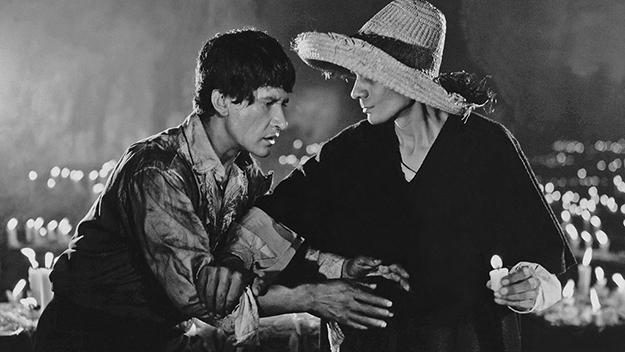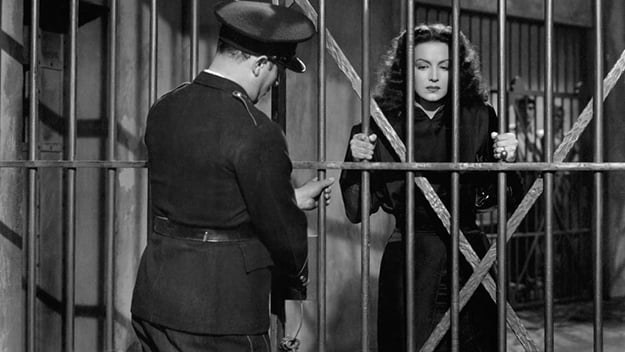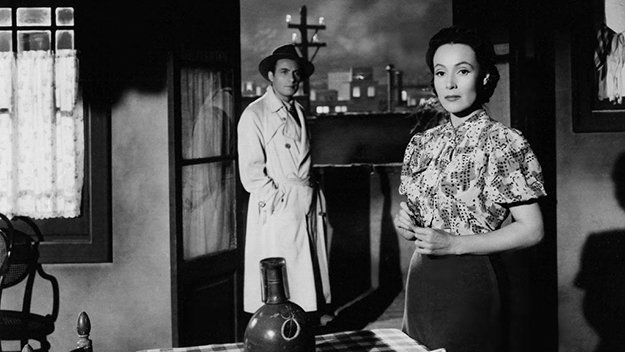Macario (Roberto Gavaldón, 1960) In 2016, I visited Guadalajara for the first time to spend some time with relatives from my stepfather’s side of the family. When I wasn’t watching Chuck Jones’s Road Runner with the 6-year-olds, I was talking with my uncle, Paquito, about the films he watched in his youth. He gifted me a set of his bootleg DVDs, some of his most treasured favorites: Phantom of the Paradise (“Have you seen that crazy thing by De Palma?”), Pink Floyd: The Wall (“I saw it in a huge theater in Guadalajara and was blown away; today, that theater shows pornos”), the great Servando González’s El escapular (which answers the important question, “What would an Orson Welles–directed, Val Lewton–produced Catholic horror film set during the Mexican Revolution look like?”), and a bunch of the Mexican Buñuels that still don’t receive the attention they should (La ilusión viaja en tranvía, Subido al cielo). One of my favorites of Paquito’s recommendations was Macario, perhaps the best-known film by the Mexican studio director Roberto Gavaldón (1909-1986), and one of the shining hours for the cinematographer Gabriel Figueroa. It’s a riff on a Marxist, sentimental-peasant novella of the same name by B. Traven, which itself was adapted from the Brothers Grimm fairy tale “Godfather Death.” The film is about a woodcutter named Macario (Ignacio López Tarso) who is visited by Death and, as a reward for sharing a turkey with him, is granted a gourd that cures all ailments—just as long as Macario cures only people Death approves of. This anti-Coco Día de Muertos parable has an oaky, lived-in feel born of its hauntingly involved portrayal of an impoverished rural family’s toils, their hunger and their mortality. The film’s conflicted Catholicism and its director’s lack of flash spoke to me and compelled me to learn more about him. The Museum of Modern Art’s 13-film Gavaldón retrospective not only provided a great primer to the director’s legacy, it’s also the latest effort to preserve the memory of the woefully under-discussed Época de Oro, “the Golden Age of Mexican cinema.” (In June, a six-film retrospective of Julio Bracho begins at the Berkeley Art Museum and Pacific Film Archive, and the British Film Institute will highlight films by Bracho, Gavaldón, and Emilio Fernández.) It wasn’t until recently that those in the English-speaking world could get a read on any Mexican studio directors beyond Buñuel the wandering Spaniard (and even his Mexican period doesn’t have the reach it should). With the MoMA retrospective, Gavaldón takes his rightful place as a genius screen misanthrope, the evil twin of cinematic poets of fate such as Frank Borzage and Jacques Demy. Gavaldón takes their worlds guided by chance and replaces their beautiful romantics with the crummiest losers, refusing to accept the bum hand that God has dealt them. His stable of damned souls includes the urbane Arturo de Córdova, a well-dressed chump who hides his insecurities beneath big-brimmed fedoras, man-swallowing fires like María Félix (and local legends like Leticia Palma who deserve to be better-known), and a maniac, refined from the ranch (Pedro Armendáriz), Gavaldón’s pet favorite whenever he needed someone to inject some good old vile cruelty in any scene that flirts with optimism. This glamorously unlikable ensemble helps Gavaldón overwhelm the viewer with the same mysterious misanthropy the filmmaker finds lurking everywhere in the nuclear age, a Catholic distrust of mortals that powers the work he’s most personally invested in: The Kneeling Goddess (La diosa arrondillada, 1947), A la sombra del puente (1948), Rosauro Castro (1950), El siete de copas (1960), Rosa blanca (1961), Dias de otoño (1962), and especially The Other One (La otra, 1946), In the Palm of Your Hand (En la palma de tu mano, 1951), Night Falls (La noche avanza, 1952), El rebozo de Soledad (1952), and Macario (1960; a Cannes competition entry and an Oscar nominee).
The Kneeling Goddess (Roberto Gavaldón, 1947) What distinguishes the Gavaldón sensibility is, roughly, his ability to burrow deep into uniquely Mexican tics of style to draw the most unflattering portraits of human cruelty—which, on his good days, matched those painted by his colleague Buñuel. His metiér was the Mexican melodrama, which, with its overload of emotions and dependence on the formulaic, the well-worn plot twist, was the ideal arena for Gavaldón to hone his worldview. Here’s de Córdova (playing one of Gavaldón’s favorite male archetypes: a meek, warmed-over skin of milk constantly screwed over by his bad luck) as he explains to María Félix why they must continue their affair in The Kneeling Goddess: “The things we do to each other are sometimes determined by impulses most dark and secret. When I saw you today, my memories blended suddenly like an avalanche.” Here’s her response, much later, after she has scoffed at his paltry attempts at poetry: “Either you are mine or you destroy me; there is no middle ground, since our love speaks another language: To death, it says life; fire, to cold, and to silence, words. I, too, am either yours—or I destroy you. Neither will I consider a middle ground.” Along with the flashing neon eyesores that telegraph his films’ lessons (which, because they’re so imaginatively contrived, we don’t mind), lines like these are the only moments when excess is allowed into Gavaldón’s otherwise dry, morally black-or-white world. If one speaks Spanish, the nuttiness of this dialogue becomes even more apparent. Even the most exacting translation can’t do proper justice to the potent mixture of the sublime and the ridiculous: the rolling curlicues of Spanish, the ornate words, the cliché sentiments out of which they spring, and the frightening passion put into the words by the star-gods themselves (especially the holy trinity of Félix, Dolores del Río, and Armendáriz, whose characters are grotesquely obsessed with their Romanticism, twice-removed from the Gospel truth). The dialogue is where Gavaldón revels in all of the maximalism he’s removed surgically from his images. Few cuts break up the flow of Gavaldón’s mise en scène, and he has a knack for dividing up space into clean, deep planes of action à la Gregg Toland—the fore-mid-background is constantly in use, but there is no equalized, all-over, anti-negative-space clutter like in a Huston shot. Whether the picture’s cinematographer is Gabriel Figueroa or Alex Phillips, Gavaldón prefers a invisible spatial order that’s at odds with the spilling-over, writhing quality of his characters. Gavaldón excels as a workaday artist, an anonymous for-hire craftsman whose command of space and tone is not only virtuosic but consistent, and suggests certain secret obsessions that seep into each of the studio projects he was told to shape.
The Other One (Roberto Gavaldón, 1946) One of Gavaldón’s typically perverse moves is to insert a wacky scene where it doesn’t belong. In Night Falls, three dumb thugs overcome by greed (among them celebrated Mexican supporting player Armando “El Chicote” Soto La Marina) are debating whether to kill Mexico’s most famous jai alai player (Armendáriz, deep in debt and stupid-drunk after being forced to down a handle of tequila in one gulp) or sober him up and make him give them the $25,000 he’s got in his bank. Most of these scummy comic scenes—hilarious bits of back-and-forth between the dumb hoods, whose mischievous, lewd Mexican lilt delights me endlessly—are not out of place in the grouchy milieu of the film, with its tiresomely greedy characters and its lout of a lead who slaps women around. After Armendáriz’s character guns down one of his mistresses (for being old and broke), El Chicote’s thug looks at the corpse and cracks, “Jesus, how these guys fight. Now it’s really like what Westinghouse says: the rest is silence!,” saying the slogan in English with a nasal whine. In keeping with Gavaldón’s permanent mood, the film ends with as much nastiness as he can muster: a sudden, satisfying comeuppance for the lout that combines the director’s penchant for Rod Serling–ish twists with a dress rehearsal for the finale of Truffaut’s The Soft Skin (1964). It’s all grotesquely underlined by a denouement in which a dog pisses on a torn poster of Armendáriz’s star athlete before it’s unceremoniously tossed into a trash bin by a street-sweeper. There are two things that Gavaldón cannot ever be accused of peddling: sentimentality and forgettable, undefined people. Though he and his writing partner, the Marxist author José Revueltas, detested most middle-class urbanites with a passion, Gavaldón had a soft spot for the poor, out-of-luck wretch: Don Quixote; an ugly-duckling twin sister who works all day for no reward (The Other One); a starving peasant with a sun-blanched face (Macario); a suicidal baker abandoned on her wedding day, forced to retreat into pathetic fantasies (Dias de otoño). All of them are pawns to the whims of fate, characters whose paths were determined long before they were born. All at once, Gavaldón reviles, admires, and pities them. Carlos Valladares has written for the San Francisco Chronicle, The Criterion Collection, and Gagosian Quarterly. He is from Los Angeles and lives in New York City.


